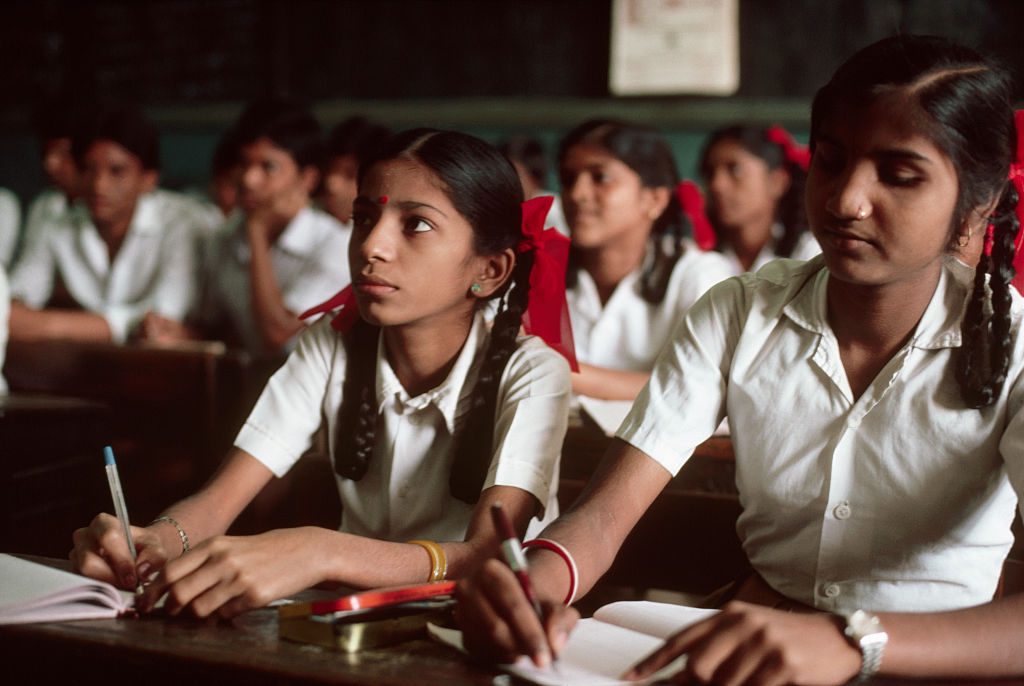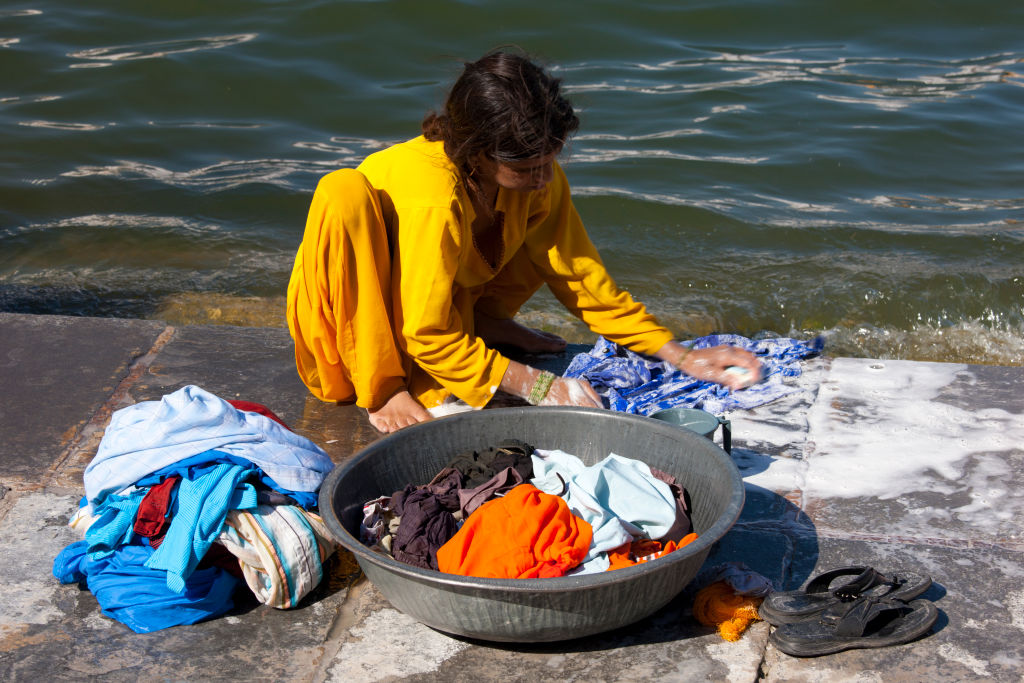
Neha Lal wipes her eyes with the back of her hand carefully. The strong odor of the dried, brittle red chillies are making her eyes water as she grounds them into a paste with onions, garlic, cumin and coriander on a grinding stone that’s almost equal to her weight. Later, she chops okra to fry in oil along with the ground spice. The pan is bigger than her and she has to keep a grip on the ladle with both her hands to stir the curry. While it cooks, she measures out wheat flour in a large bowl and pours water over it, her small hands struggling to tame the wheat flour into a dough. Later she wakes up her younger siblings, and herds them to the bathroom. Her day started early at 5 a.m., when she swept the yard, eyes heavy with sleep.
Neha is only 11 years old — and should be in school. In August 2009, when she was around one year old, the Indian parliament had passed the landmark Right to Education Act that made education free and compulsory for children between the ages 6 and 14. Neha’s parents enrolled her in school when she was six, but she dropped out four years later, before completing elementary school. She had to help her mother with housework and look after her younger siblings, Palak and Sunny.
“My brother and sister are very small. My grandmother is old and ill. If I don’t help my mother, she will not be able to manage especially during harvest season when she goes to the fields at 4 am to help my father,” Neha tells me.
It will be a decade in August since the Indian Parliament passed the Act. In 2010, when the act was implemented, TIME asked: “School is a Right, But Will Indian Girls Be Able to Go?” The skepticism was hidden in the question. The skepticism is now a fact, backed by statistics.
What the RTE has achieved — as we had predicted in 2010 — is that it has brought girls back to schools (even if it’s been hard to keep them there.) In 2006, 10.3 percent of girls between the ages of 11 to 14 were out of school. In 2018 the figure stood at 4.1 percent, a significant decline. In 2018, 13.5 percent of girls between the ages 15-16 were out of school, as opposed to more than 20 percent in 2008, according to the 2018 Annual Status of Education Report (ASER) released in January this year.
Ranjana Kumari, director of the New Delhi-based Centre for Social Research says that in the past decade, it’s become increasingly acceptable to educate girls, especially in rural India. “Young girls are also more aware of what they want to wear, what they want to do with their lives,” Kumari told TIME.
Neha exemplifies much of this aspiration and advancement. “I would like to go to school because then I can work in the city someday,” she tells me with a shy smile, digging her hands deep into the pockets of her knock-off blue jeans with elaborate embroidery around its ankles.

The RTE was also able to address some niggling obstacles to girls attending schools, including a lack of toilets and other safety concerns. The proportion of schools with usable girls’ toilets doubled since 2010, reaching 66.4% in 2018, while schools with boundary walls — which ensured a safer environment for girls — increased by 13.4 percent to 64.4% in 2018, according to the same ASER report.
But the RTE failed to acknowledge, and therefore address, the most pressing reason why girls have been unable to go to school in India: housework. The RTE has no provision for banning housework or agricultural work for children. As their mothers step out to work — in the informal sector or as farmers or agricultural laborers — to substantiate the family income, underprivileged girls like Neha are shouldering the burden of care and housework. In a report last year, the National Commission for Protection of Child Rights had said around 40 percent of 15 to 18-year-old-girls were out of school and among them almost 65 percent were engaged in household work. “Adolescence is an important transitioning phase and girls are not allowed to be involved in any kind of constructive work important for development of our nation and are confined to household work,” the report said.
Currently, Indian women contribute only 18 percent to the country’s GDP — one of the lowest in the world — and only 25 percent of India’s labor force is women.
The burden of housework on Indian girls is a spiraling crisis for India. In its 2015 report on gender inequality in India, the McKinsey Global Institute found that Indian women perform nearly 10 times the unpaid care work as men. That’s almost three times more than the global average. Housework accounts for 85 percent of the time women in India spend on unpaid care work, the 2018 report found. And much of this is either shared or shouldered by young girls like Neha, who should ideally be in school. “Girls who do two hours of housework per day have a 63 percent probability of finishing secondary school,” the 2018 report said.
India could add a whopping $770 billion to the country’s GDP by 2025 by encouraging girls to study and participate in the workforce according to McKinsey’s gender parity report last year.
But the task is mighty. It involves changing social mindsets and making housework a task shared among all genders. It also involves plugging all loopholes, including the availability of free or affordable alternate caregivers for working women and modernizing the education system all over the country, including an overhaul of textbooks that push through gender-typical roles.
Some of those efforts are already underway. According to reports in the Indian media, the Maharashtra State Bureau of Textbook Production and Curriculum Research has revised textbooks for first and second grades to show men and women sharing household chores, and to portray women as professionals rather than just housewives.
A draft of the new National Education Policy, which is out for public consultation until June 30 and which will replace the existing NEP (last revised in 1992), is also hoping to shift focus to girls’ access to education and the role gender stereotypes and housework play in girls dropping out of schools. It plans to hold regular discussions with parents “on social issues like child marriage, not sending girls to high school or for further studies.”
Education has been a right for a decade now, but Indian girls are only just beginning to claim their half of it.
More Must-Reads From TIME
- The 100 Most Influential People of 2024
- Coco Gauff Is Playing for Herself Now
- Scenes From Pro-Palestinian Encampments Across U.S. Universities
- 6 Compliments That Land Every Time
- If You're Dating Right Now , You're Brave: Column
- The AI That Could Heal a Divided Internet
- Fallout Is a Brilliant Model for the Future of Video Game Adaptations
- Want Weekly Recs on What to Watch, Read, and More? Sign Up for Worth Your Time
Contact us at letters@time.com